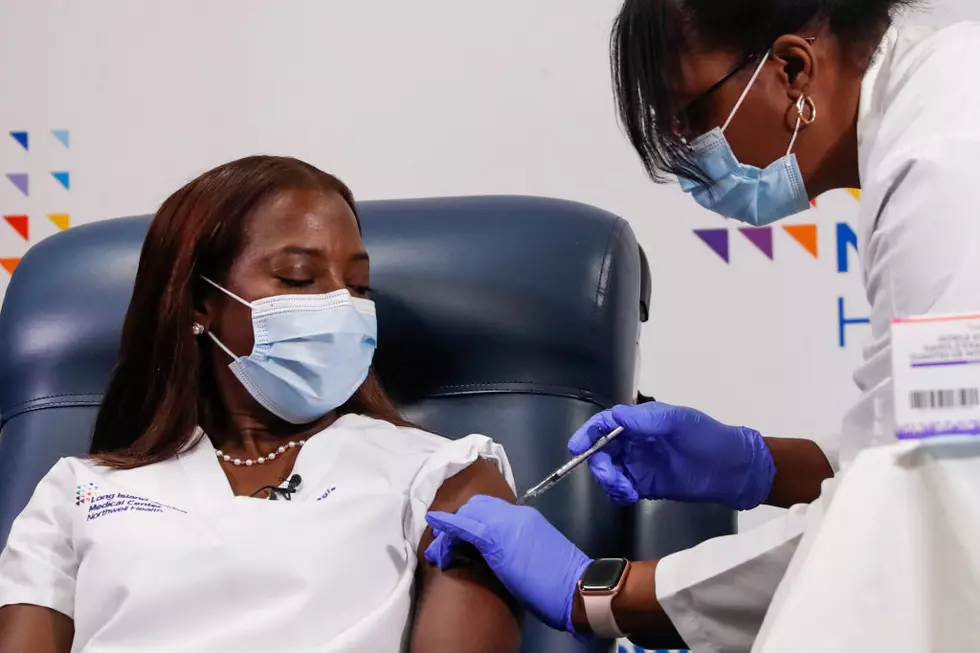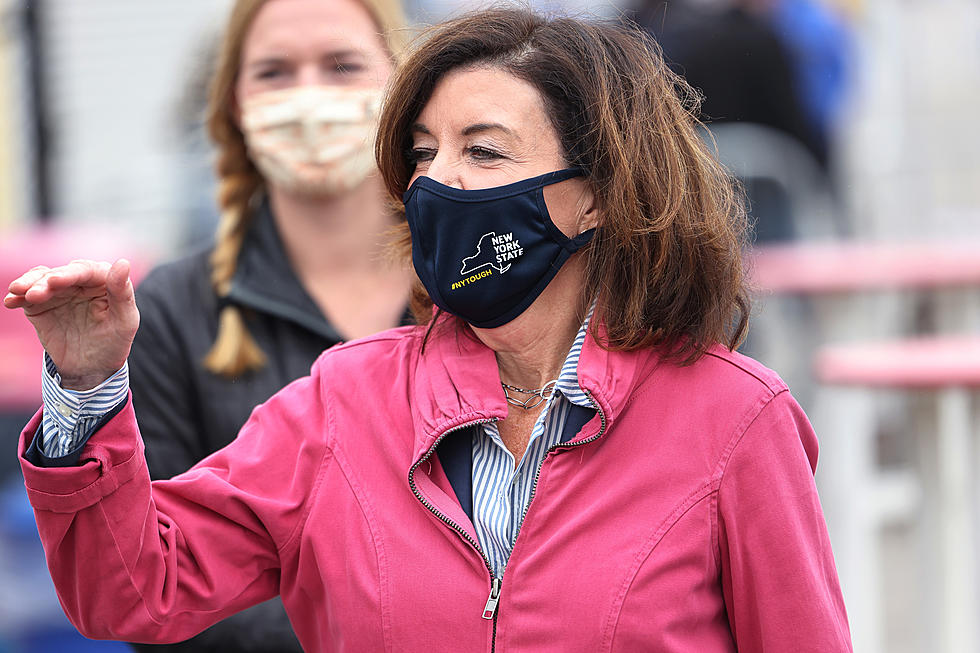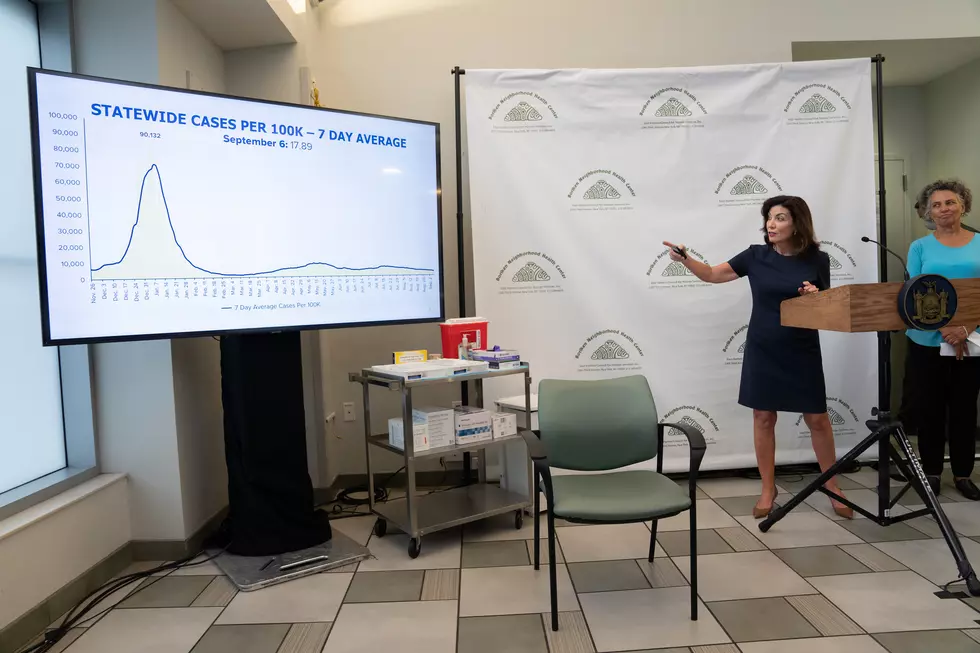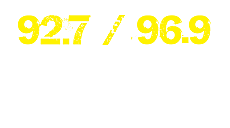
New Rules New Yorkers Must Follow at Hair Salons, Barbershops
If you are itching for a haircut, New York officials released a number of new guidelines you and barbers must follow when hair salons are allowed to reopen from a COVID-19 shutdown, including customers wearing masks.
Hair salons and barbershops are allowed to reopen in New York once a region hits Phase 2. On Friday, five of New York's 10 regions entered Phase 2 of the four-phased reopening plan. Two more regions are expected to hit Phase 2 by Wednesday. Next week, the Mid-Hudson Region and Long Island could enter Phase 2.
Below are guidelines hair salons, barbershops and customers must follow in order to reopen, according to New York State Forward:
Physical Distancing
- Limit the workforce and customer presence to no more than 50% of the maximum occupancy for a particular area as set by the certificate of occupancy.
- Ensure 6 ft. distance between individuals, unless safety or core function of the work activity requires a shorter distance (e.g. haircut).
- Ensure that customer seating allows customers to maintain 6 ft. distance from all others except for the employee providing services, unless a physical barrier is in place
- Waiting rooms must be closed and lines should be avoided, to the extent possible. Walk-in customers who are not able to be immediately served should be provided a time to return.
- Tightly confined spaces (e.g. stock rooms, behind cash registers) must be occupied by only one individual at a time, unless all individuals are wearing face coverings. If occupied by more than one person, keep occupancy under 50% of maximum capacity of the space.
- Post social distancing markers using tape or signs that denote 6 ft. of spacing in commonly used areas.
- Limit in-person gatherings and use tele- or videoconferencing for employee interactions whenever possible. Essential in-person gatherings (e.g. meetings)
should be held in open, well-ventilated spaces with appropriate social distancing among participants. - Establish designated areas for pick-ups and deliveries, limiting contact to the extent possible.
- Close all non-essential amenities including product samples, water fountains, and magazine areas.
Protective Equipment
- Employers must provide employees with an acceptable face covering at no-cost to the employee and have an adequate supply of coverings in case of need for replacement.
- Acceptable face coverings include but are not limited to cloth (e.g. homemade sewn, quick cut, bandana), surgical masks, N95 respirators, and face shields.
- Employees must wear a face covering and a face shield that completely covers the nose and mouth when providing service directly to customers. Employees also must wear face coverings any time they interact with customers (e.g. ringing up purchases), even if they are 6 ft. or more apart.
- Customers must only be permitted entry into the hair salon or barbershop if they wear an acceptable face covering, provided that they are over age two and medically able to tolerate one.
- Face coverings must be cleaned or replaced after use or when damaged or soiled, may not be shared, and should be properly stored or discarded.
- Employees must use gloves when providing service to a customer, or workers must sanitize or wash their hands before and after contact. If gloves are used, they must be replaced after each appointment.
- Employees must wear clean smocks or gowns. If providing coverings (e.g. apron, smocks) to a client, coverings must be disposable, or cleaned and disinfected between each use. Limit the sharing of objects (e.g. clippers, tools) and discourage touching of shared surfaces; or, when in contact with shared objects or frequently touched areas, wear gloves (trade-appropriate or medical); or, sanitize or wash hands before and after contact.
- Services offered must not require removal of a facemask (e.g. beard trim).
Hygiene and Cleaning
- Adhere to hygiene and cleaning/disinfection requirements from the Centers for Disease Control and Prevention (CDC) and Department of Health (DOH) and maintain cleaning logs on site that document date, time, and scope of cleaning and disinfection.
- Provide and maintain hand hygiene stations, including handwashing with soap, water, and paper towels, as well as an alcohol-based hand sanitizer containing 60% or more alcohol for areas where handwashing is not feasible.
- Place hand sanitizer throughout the location for use by employees and customers.
- Provide and encourage employees to use cleaning/disinfecting supplies before and after use of shared and frequently touched surfaces, followed by hand hygiene. Wash hands for 20 seconds with soap and water before and after providing services to each customer.
- Conduct regular cleaning and disinfection at least after every shift, daily, or more frequently as needed, and more frequent cleaning and disinfection of shared objects (e.g. registers) and surfaces, as well as high transit areas, such as payment devices, restrooms, common areas.
- Clean and disinfect workstations and tools (e.g. brushes, chairs, shears) between each customer.
- Cleaning and disinfecting of the hair salon or barbershop, shared surfaces, and other areas, as well as equipment, should be performed using Department of Environmental Conservation (DEC) products identified by the Environmental Protection Agency (EPA) as effective against COVID-19.
- If cleaning or disinfection products or the act of cleaning and disinfecting causes safety hazards or degrades the material or machinery, personnel should have access to a hand hygiene station between use and/or be supplied with disposable gloves.
- Leave time between appointments for full workstation cleaning (e.g. 15 min.).
- Prohibit shared food and beverages (e.g. buffet-style meals).
Communication
- Affirm you have reviewed and understand the stateissued industry guidelines, and that you will implement them.
- Post signage inside and outside of the hair salon or barbershop to remind personnel and customers to adhere to proper hygiene, social distancing rules, appropriate use of PPE, and cleaning and disinfecting protocols.
- Train all personnel on new protocols and frequently communicate safety guidelines.
- Establish a communication plan for employees, visitors, and customers with a consistent means to provide updated information.
- Maintain a continuous log of every person, including workers and visitors, who may have close contact with other individuals at the hair salon or barbershop; excluding customers and deliveries that are performed with appropriate PPE or through contactless means
- If a worker, visitor, or customer was in close contact with others at the salon or barbershop location and tests positive for COVID-19, employer must immediately notify local health departments and cooperate with contact tracing efforts, including notification of potential contacts, such as workers, visitors, and/or customers (if known) who had close contact with the individual, while maintaining confidentiality required by state and federal law and regulations.
- Conspicuously post completed safety plans on site.
Screening
- Ensure that employees performing services directly on or to customers (i.e. haircutting) are tested for COVID19 through a diagnostic test every 14 days, so long as the region in which the hair salon/barbershop is located remains in Phase II of the State’s reopening.
- Employees who are sick should stay home or return to home, if they become ill at work.
- Implement mandatory health screening assessment (e.g. questionnaire, temperature check) before employees begin work each day (but not customers or delivery personnel), for (1) COVID-19 symptoms in past 14 days, (2) positive COVID-19 test in past 14 days, and/or (3) close contact with confirmed or suspected COVID-19 case in past 14 days. Assessment responses must be reviewed every day and such review must be documented.
- If a person has COVID-19 symptoms AND EITHER tests positive for COVID-19 OR did not receive a test, the individual may only return after completing at least 14 days of self-quarantine
- If a person does NOT have COVID-19 symptoms BUT tests positive for COVID-19, the individual may only return after completing at least 14 days of self-quarantine.
- If a person has had close contact with a person with COVID-19 for a prolonged period of time AND is symptomatic, the individual should follow the above protocol for a positive case.
- If a person has had close contact with a person with COVID-19 for a prolonged period of time AND is NOT symptomatic, the individual must complete a 14 day self-quarantine.
- An employee who screens positive for COVID-19 symptoms should not be allowed to enter the location and should be sent home with instructions to contact their healthcare provider for assessment and testing.
- Screeners should be trained by employer-identified individuals familiar with CDC, DOH, and OSHA protocols and wear appropriate PPE, including at a minimum, a face covering.
- Have a plan for cleaning, disinfection, and contact tracing in the event of a positive case.
Hudson Valley Reopening Tops This Week's Hudson Valley News
More From WRRV-WRRB









